
Magento Wholesale Pricing: Implementation and Strategies
B2B eCommerce sales might reach $3.2 trillion by 2026. Yet 62% of Magento merchants find it difficult to use wholesale pricing strategies. Implementing Magento wholesale pricing helps compete in today's digital B2B marketplace.
The article explores the strategies, cost considerations, and use cases of wholesale pricing.
Key Takeaways
-
Advanced pricing strategies help boost sales and loyalty.
-
The costs of building a wholesale Magento store, from setup to maintenance.
-
Extensions help manage quotes, pricing, and bulk orders.
-
Get tips to reduce costs and improve long-term ROI.
-
Scale Magento for international wholesale operations.
B2B eCommerce sales might reach $3.2 trillion by 2026. Yet 62% of Magento merchants find it difficult to use wholesale pricing strategies. Implementing Magento wholesale pricing helps compete in today's digital B2B marketplace.
The article explores the strategies, cost considerations, and use cases of wholesale pricing.
Key Takeaways
-
Advanced pricing strategies help boost sales and loyalty.
-
The costs of building a wholesale Magento store, from setup to maintenance.
-
Extensions help manage quotes, pricing, and bulk orders.
-
Get tips to reduce costs and improve long-term ROI.
-
Scale Magento for international wholesale operations.
What is Magento Wholesale Pricing?
Magento wholesale pricing allows merchants to offer custom pricing to B2B customers. It is different from regular retail prices.
The pricing enables store owners to create customer groups, such as “Wholesale”. They can apply discounted or tiered pricing based on the quantity purchased.
Magento also supports catalog price rules and tier pricing. It helps automate discounts for bulk orders.
The strategy is ideal for businesses catering to both retail and wholesale customers. It helps them manage flexible pricing structures and build long-term customer relationships.
Magento’s wholesale pricing tools make supporting complex B2B sales models easier. Midwest Industrial Supplies implemented a strategic Magento wholesale pricing structure. It increased their average order value by 35% and customer retention by 28% within six months.
The global B2B eCommerce market is $32.11 trillion in 2025. It might grow at a CAGR of 14.5%, reaching $36.16 trillion by 2026. In the US alone, B2B eCommerce site sales reached $2.297 trillion in 2024. By 2028, it will grow to $3.027 trillion. The global market might reach $47.54 trillion by 2030 with a CAGR of 16.17%
5 Advanced Wholesale Pricing Strategies for Magento
1. Dynamic Pricing Based on Customer Value
Wholesale pricing is no longer a one-size-fits-all model. Top-performing B2B merchants are shifting toward dynamic pricing. It adjusts based on a customer’s value and behavior. The strategy involves tailoring prices based on:
-
Customer Lifetime Value offers customers better discounts or incentives. They generate the most revenue over time. Magento stores customer group associations in the customer_entity table under the group_id field. Examples of CLV-based pricing:
1. High CLV customers offer special discounts for repeat buyers. It is also offered to those with high order volumes.
2. Mid-Tier CLV customers provide incentives like free shipping or product bundles.
3. Low CLV or new customers offer introductory deals. It encourages purchases and improves retention.
-
Industry Vertical price products differently for industries with varying needs or price sensitivity. The Shared_catalog table manages the shared catalogs for B2B pricing. Steps to configure the pricing include:
1. Navigate to Customers > Customer Groups.
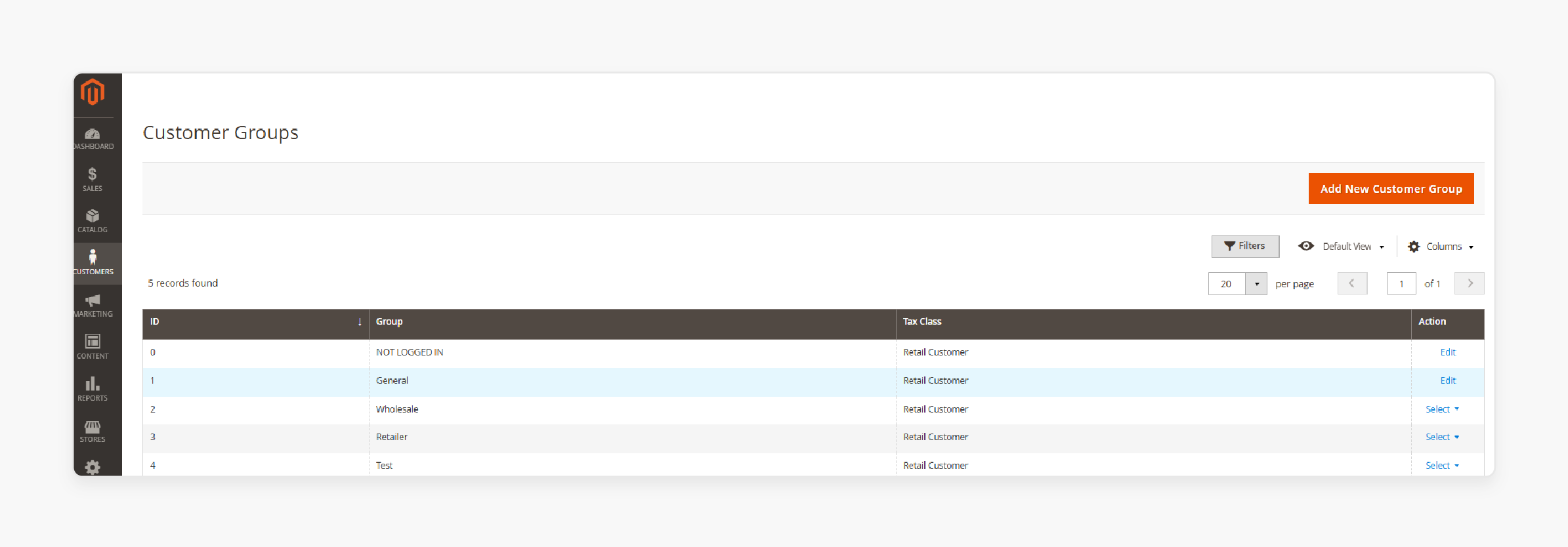
2. Create new Corporate and Healthcare groups based on industry verticals.
3. Assign customers to the correct groups during account creation. Automate this process via a B2B registration workflow.
4. Go to Catalog > Products > Edit Product.
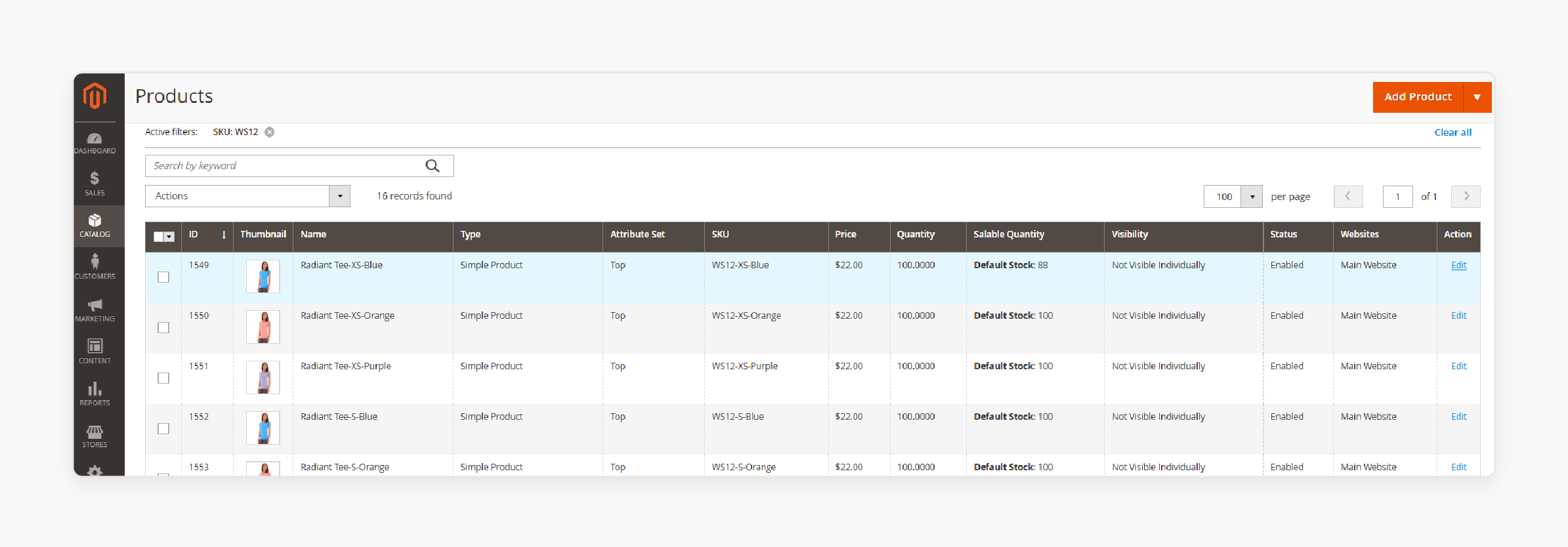
5. Under Advanced Pricing, add Tier Price for each industry group. You can offer discounts or specific pricing for each vertical.
6. Go to Catalog > Shared Catalogs and create catalogs specific to each industry vertical.
7. Define which products and prices are visible to customers in each vertical group.
8. Use custom templates to display industry-specific pricing based on the customer’s group.
-
Geographic Location: Account for regional market variations, taxes, or shipping costs.
-
Buy History rewards repeat customers with personalized pricing or loyalty-based discounts.
Tips:
-
Magento Open Source requires third-party extensions to support advanced segmentation.
-
Extensions like Amasty Advanced Permissions can enable pricing logic tied to customer profiles.
-
Dynamic pricing improves conversion rates by making offers more relevant. It can increase your profit margins by aligning prices with perceived value.
2. Negotiable Quotes and Custom Pricing
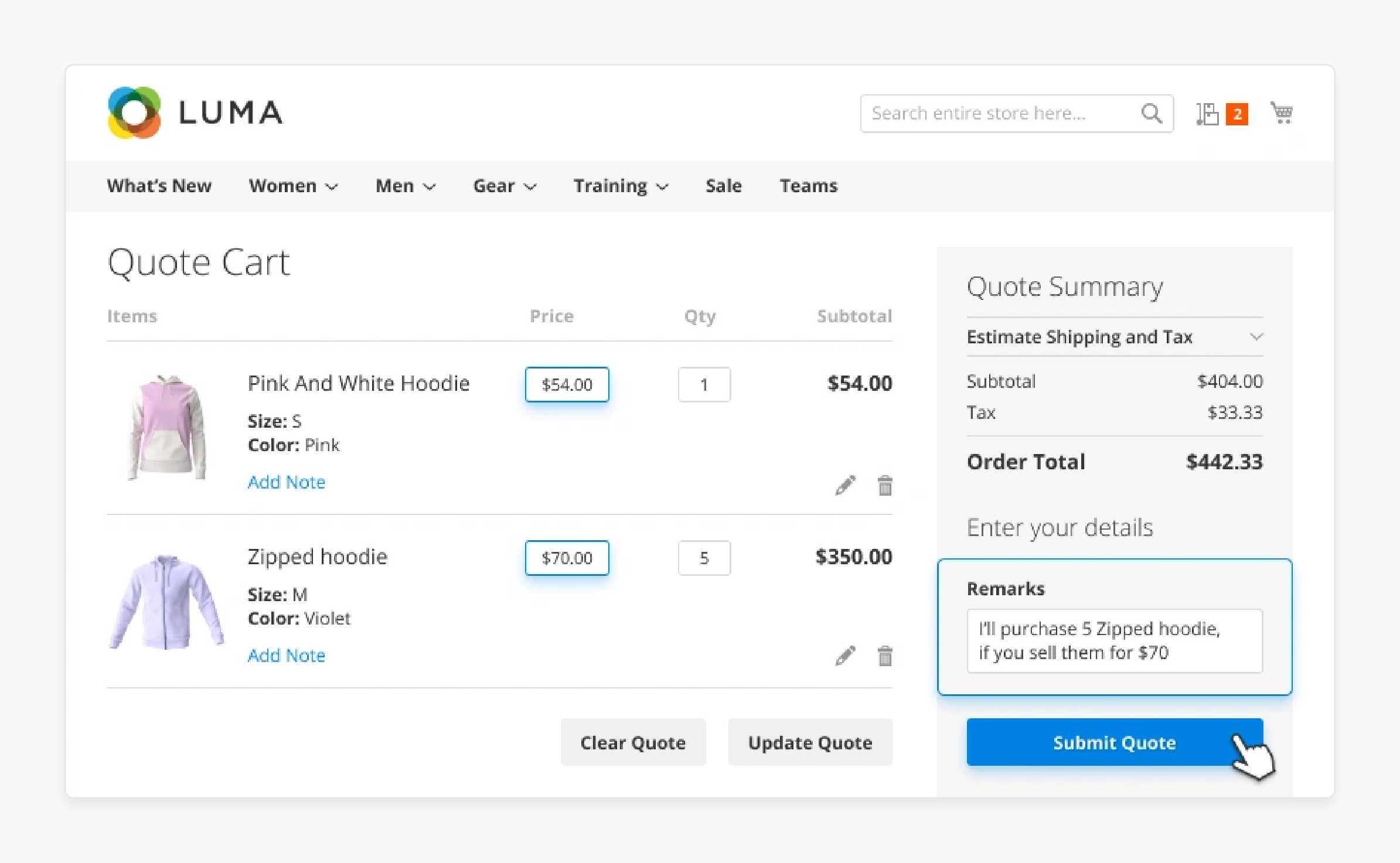
67% of wholesale buyers expect negotiable pricing, particularly for large or recurring orders. Magento Commerce includes built-in quote functionality. Open Source users can replicate this using extensions.
Key Features:
-
Request for Quote allows customers to suggest their pricing for bulk orders.
-
Sales reps can review or approve quotes in the admin panel.
-
Accepted quotes should convert into orders without re-entry.
-
Negotiation history maintains transparency and tracks pricing discussions.
Effective negotiation tools build trust and cultivate long-term relationships. They also give sales teams more control over complex or high-value transactions.
3. Bulk Ordering Enhancements
Time is money in wholesale. Buyers expect to place large, complex orders. Enhance Magento’s bulk ordering process through:
Features:
-
Quick order forms enable customers to input SKUs and quantities. They don’t need to browse.
-
CSV uploads are ideal for recurring purchases. Buyers can upload their usual order list.
-
Order templates enable customers to save and reuse common order combinations.
-
Add one-click reorder functionality from past invoices or shipments.
These features reduce friction and encourage larger, faster checkouts. It boosts both average order value and customer satisfaction.
4. Hidden Pricing and Exclusive Access
Protecting your pricing strategy is key in B2B. Many Magento wholesalers now choose to hide product prices from unregistered users to:
-
Prevent competitors from accessing your pricing
-
Encourage account registration and lead capture
-
Reinforce exclusivity and relationship-based pricing
You can also restrict product visibility or access to certain catalogs. It depends on the customer group.
Tips:
-
Use customer group permissions to hide prices until the user logs in.
-
Show “Login to See Price” messages or gated content.
-
Customize shared catalogs for personalized product and price visibility.
It helps build exclusivity and supports a more personalized B2B approach.
5. Currency and Tax Considerations
Global B2B businesses must handle international pricing complexities, including:
-
Magento supports various currencies with automatic exchange rate updates.
-
Create tax zones and rules based on the buyer's location.
-
Enable B2B VAT ID validation and apply tax exemptions.
Key Considerations:
-
Consider rounding rules and psychological pricing for international buyers.
-
Apply shipping rate adjustments by country or region.
Proper international configuration prevents legal issues and improves customer trust in global transactions.
6 Cost Considerations for Magento Wholesale Pricing
1. Implementation and Development Costs
Magento Open Source
-
Magento Open Source is available at no cost.
-
Creating customer groups and setting tier pricing is free using built-in features.
-
$100–$500 per extension for features like hidden pricing or quick ordering.
-
$2,000–$15,000+ for advanced features, including dynamic pricing and custom workflows.
Adobe Commerce (Paid Edition)
-
The annual license fee starts at $22,000 per year, depending on the revenue tier.
-
Built-in B2B features include shared catalogs and buy approvals.
-
Even with built-in tools, many businesses need extra development for full integration. It integrates with ERP/CRM or tailored workflows.
2. Hosting and Infrastructure Costs
-
Shared hosting costs $20 to $100 per month. It is not recommended for B2B.
-
VPS/Dedicated Magento hosting costs range from $100 to $500 per month.
-
Magento-optimized cloud hosting, including Nexcess or Cloudways, costs $300–$ 2,000 per month. It depends on traffic and store size.
High-performance hosting is essential for wholesale stores. It is due to their large catalogs and custom pricing logic. It can increase server load.
3. Maintenance and Ongoing Costs
-
Magento often releases security and version updates. Updating a custom B2B setup may cost between $500 and $5,000 per update cycle.
-
Keeping third-party modules up to date to maintain compatibility and security.
-
Bug fixes & support incur $200–$1,000 per month for general maintenance.
-
Some agencies offer monthly support retainers for $500–$ 2,000, depending on the SLA.
4. Cost by Business Size
| Business Type | Recommended Setup | Estimated Initial Cost | Monthly Ongoing Cost |
|---|---|---|---|
| 1. Startup / Small B2B | Magento Open Source + a few extensions | $3,000–$7,000 | $100–$500 |
| 2. Mid-Market B2B | Magento Open Source + custom modules | $8,000–$25,000 | $500–$1,500 |
| 3. Large Enterprise B2B | Adobe Commerce + integrations | $30,000–$100,000+ | $1,500–$5,000+ |
5. Long-Term ROI and Strategic Considerations
-
Extensions speed up implementation. Custom development takes longer but helps meet specific needs.
-
Adobe Commerce provides scalable features that are out of the box. Open Source may need rebuilding or overhauling systems as you grow.
-
Custom development offers full ownership and control. It requires a reliable developer or agency for long-term success.
-
Costs increase with the integration of complex ERP and shipping systems. Especially if it requires real-time pricing updates or order syncs.
6. Tips to Optimize Costs
-
Phase your development and start with must-have features. Then, expand as revenue grows.
-
Choose well-reviewed extensions and avoid low-quality modules. These could cause conflicts or slow performance.
-
Use a reliable and fast Magento hosting provider. It reduces downtime and support costs.
-
Invest in documentation and training. It reduces internal dependency on developers for day-to-day operations.
5 Real-World Use Cases of Magento Wholesale Pricing
1. Bauhaus
-
Bauhaus used Magento's B2B capabilities to offer tiered pricing and customer segmentation.
-
Integrating Magento with their proprietary ERP system provides smooth order and account management.
-
It results in a 296% increase in online revenue and a 375% rise in conversion rates.
2. Total Uniform Solutions (T.U.S)

-
Total Uniform Solutions (T.U.S.) used Magento's B2B features. It supports bulk purchasing and manages catalog visibility based on user roles.
-
They implemented product allocation limits and employee purchasing programs. They also implemented multi-location shipping.
-
The customization enabled clients to manage uniform orders across 350 store locations.
3. The Universal Group
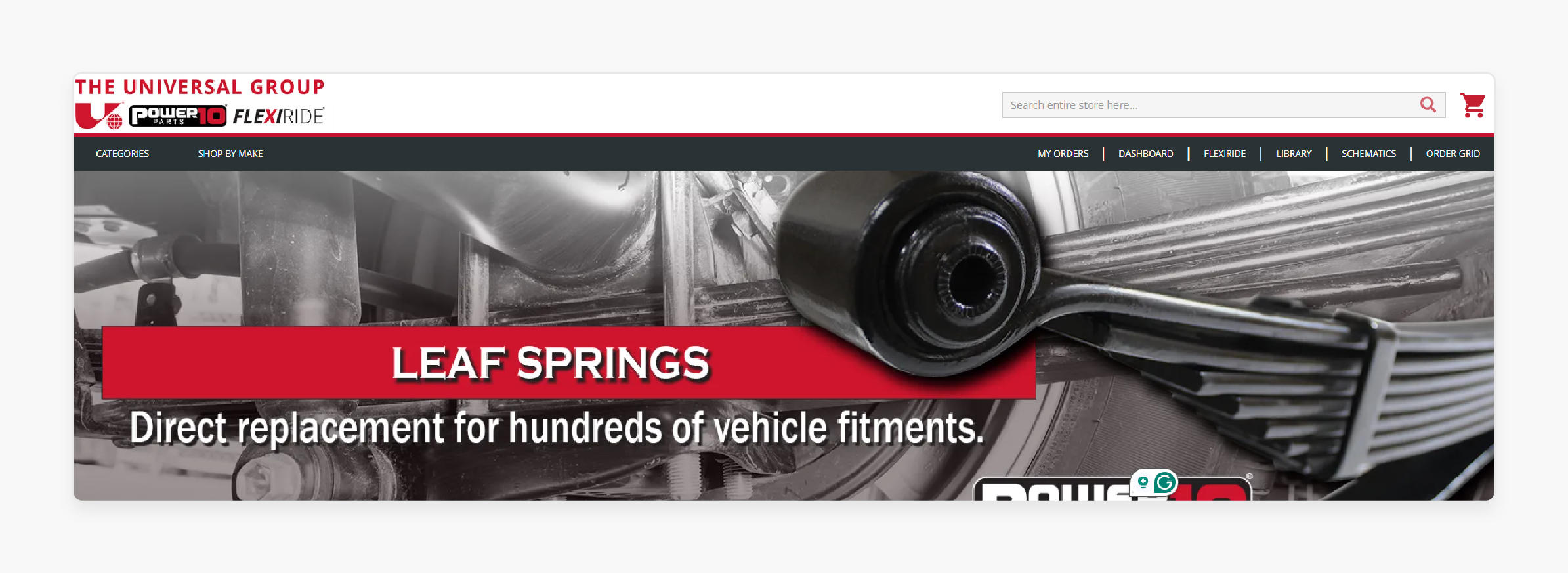
-
The Universal Group transitioned from SuiteCommerce to Magento Commerce. It helps better handle their complex B2B needs.
-
They implemented custom pricing algorithms and alternative SKU functionalities. They also implemented a tailored checkout process.
-
It enables them to move from phone-based orders to an efficient online system. It increases average order value and order frequency.
4. Vink VTS
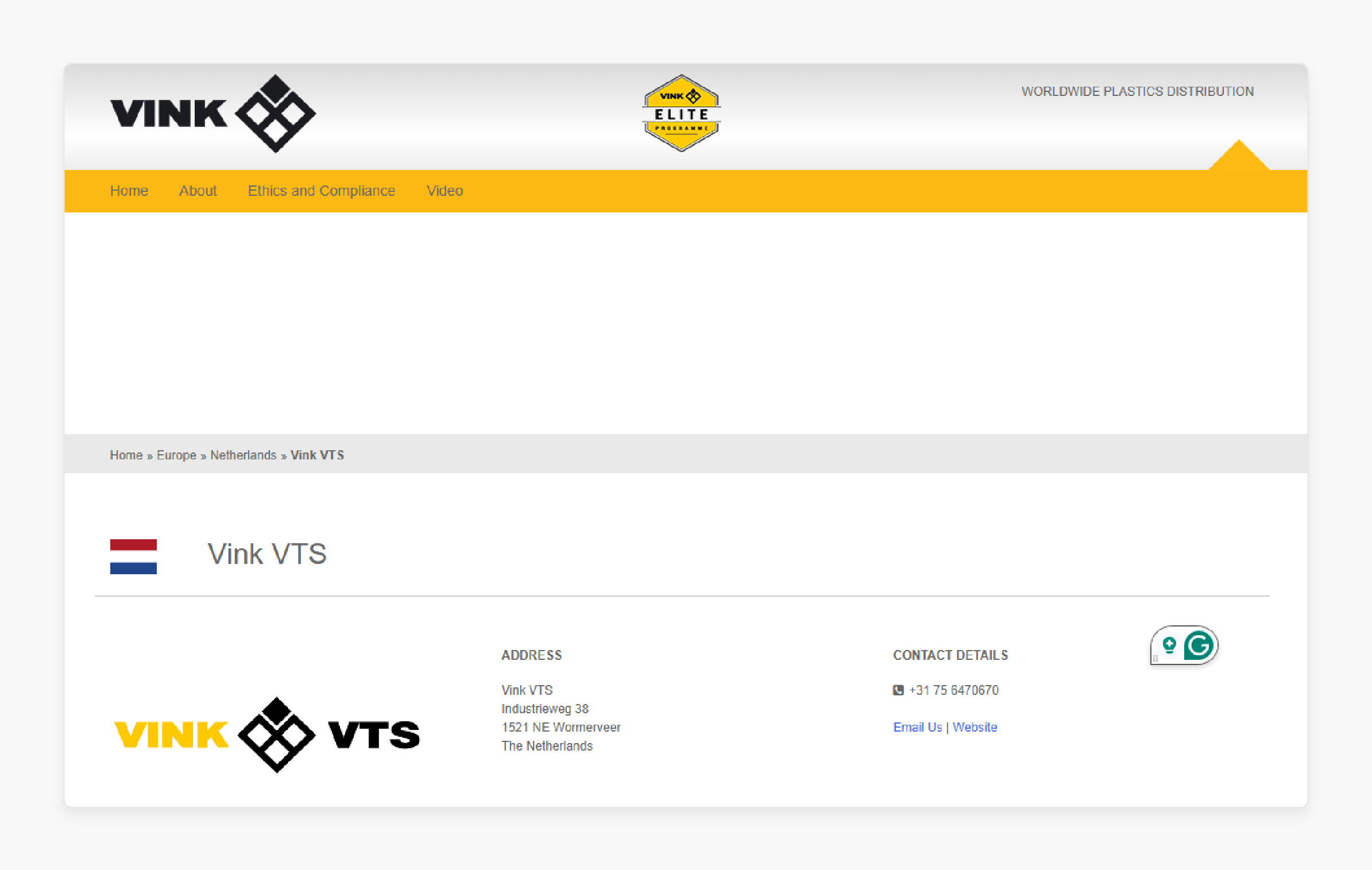
-
Vink VTS, serving over 120,000 customers, adopted Magento Commerce. It helps provide real-time access to deliveries and invoices.
-
This digital transformation resulted in a 160% increase in website orders. It also led to a shift from internal sales calls to online orders.
-
It enhances customer experience and operational efficiency.
5. Discount Coffee
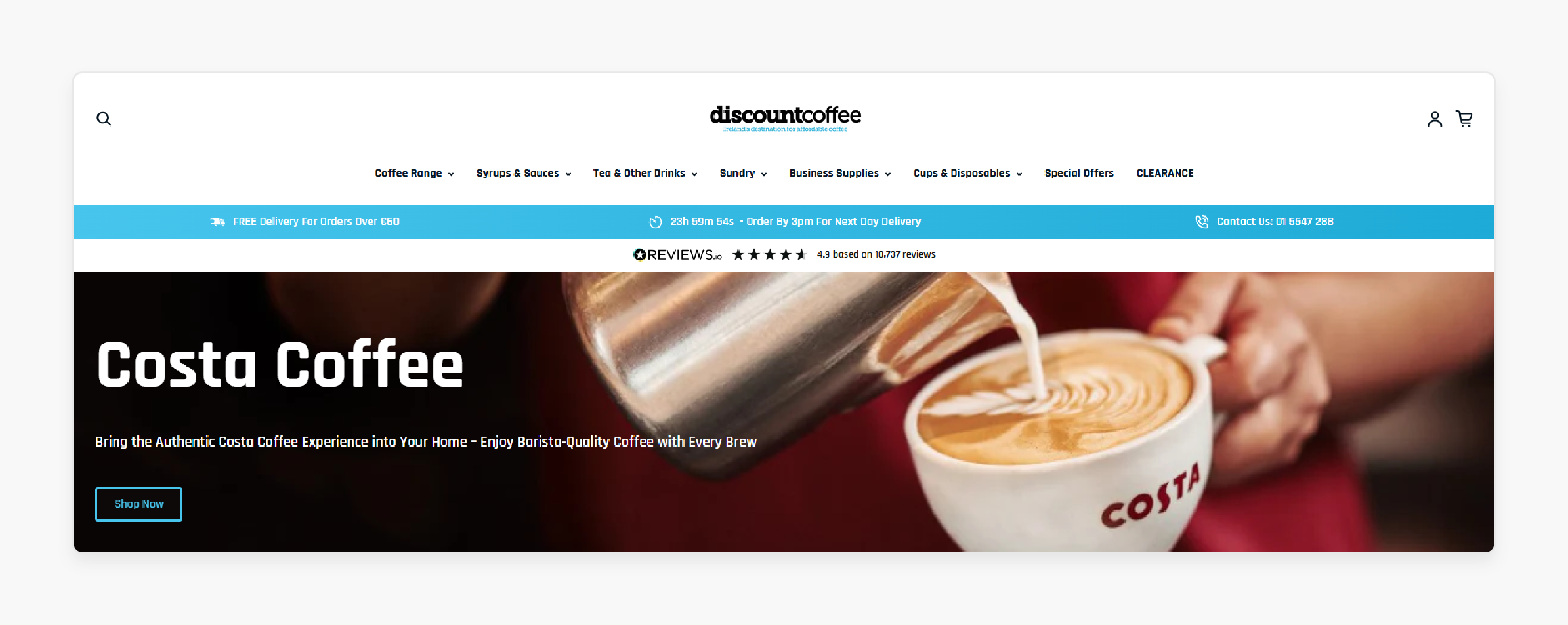
-
Discount Coffee migrated to Magento 2 Commerce Cloud. It helps better serve both B2B and B2C customers.
-
They revamped their subscription model and improved the mobile user experience.
-
It resulted in a 15% growth in new customers and a 24% rise in average order value.
6 Common Challenges and Solutions of Magento Wholesale Pricing
1. Managing Complex Pricing Structures
Wholesale businesses often have different pricing tiers or customer-specific discounts. It can become difficult to manage in Magento Open Source.
Solutions:
-
Use Magento Commerce’s Shared Catalogs. It helps offer different pricing options per customer group.
-
Install B2B extensions, such as BSS B2B Suite or Amasty Custom Pricing. They offer tiered and personalized pricing.
-
Integrate with ERP systems to sync real-time pricing and reduce manual updates.
2. Tax and Currency Variations in Global Wholesale
Global B2B sellers face challenges in applying correct tax rates and currency conversions.
Solutions:
-
Use Magento’s built-in multi-currency and tax zone configuration tools.
-
For advanced needs, integrate with tax engines like Avalara or TaxJar.
-
Enable VAT ID validation for EU customers using free modules or custom scripts.
3. Performance Bottlenecks with Custom Pricing Logic
Dynamic discount rules or customer-specific catalogs can slow down site performance.
Solutions:
-
Optimize server infrastructure with Magento-optimized hosting like Nexcess and Cloudways.
-
Use indexing and caching mechanisms, such as Redis or Varnish.
-
Simplify pricing rules using programmatic logic instead of layered rules.
4. Limited Reporting on Wholesale Behavior
Magento’s default reports are not always enough for tracking B2B KPIs. These include the quote conversion rate or reorder frequency.
Solutions:
-
Use Adobe Commerce’s advanced reporting dashboards.
-
Integrate with Google Data Studio or custom business intelligence (BI) tools via API.
-
Install reporting extensions such as Mirasvit Advanced Reports for deeper B2B insights.
5. Difficulty Onboarding B2B Customers
Manual approval workflows and a lack of automation slow down the onboarding process.
Solutions:
-
Use self-service account registration forms with approval workflows.
-
Use company account management tools in Adobe Commerce. Use B2B extensions in Open Source.
-
Automate welcome emails and catalog assignments post-approval.
6. Ongoing Maintenance of Custom Wholesale Features
Customizations for B2B features can break during upgrades or cause compatibility issues.
Solutions:
-
Work with certified Magento developers who follow best practices.
-
Maintain a staging environment for testing updates.
-
Limit the number of extensions and use modular, well-documented code.
FAQs
1. How do I set up group pricing in Magento 2?
Create a wholesale customer group and edit a product. Click "Advanced Pricing," and add a customer group price entry for your wholesale group. Enter the special price and save. Use the product grid's "Update Attributes" function for bulk updates.
2. How much does implementing wholesale pricing in Magento cost?
Implementation costs vary based on requirements. SMBs can expect to invest $4,000 to $10,000 for basic wholesale pricing features. Enterprise implementations with custom development range from $ 50,000 to $150,000+.
3. Can I offer negotiable prices to my wholesale customers?
Magento supports negotiable pricing through the built-in negotiable quotes feature in Magento Commerce. Or through third-party extensions, such as BSS Commerce B2B Solution. It helps add "Request for Quote" functionality.
4. How do I hide prices from non-wholesale customers?
You can use native Magento permissions in conjunction with customer groups. Or use extensions designed for price visibility control. It helps create a login barrier. It encourages registration and protects your wholesale pricing.
Summary
Magento wholesale pricing allows merchants to offer flexible pricing structures for B2B customers. The article explores the features of the pricing, including:
-
Use dynamic pricing based on customer behavior, location, and value.
-
Enable negotiable quotes and custom pricing for high-volume buyers.
-
Optimize bulk ordering with quick forms, CSV uploads, and templates.
-
Hide pricing and apply tax rules to support global and exclusive access.
Simplify your B2B operations with powerful wholesale features. Pair it with managed Magento hosting for expert support and faster performance.


